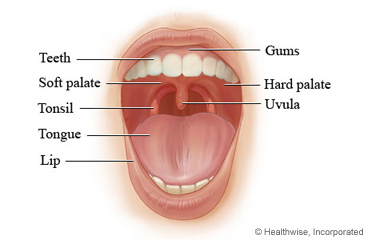Glossitis in Children: Care Instructions
Overview

Glossitis is swelling of the tongue. The tongue looks smooth and may be an unusual color from pinkish to dark
red. Glossitis is often caused by an infection. Other causes include injury, irritation from spicy foods, or a
poor diet.
Glossitis can make it hard for your child to talk, chew, or swallow, especially if they get sores on the
tongue.
Treatment for glossitis depends on the cause. An infection is treated with antibiotics. Other medicines can
relieve swelling and pain. If the swelling is severe, your doctor may prescribe steroids.
Follow-up care is a key part of your child's treatment and safety. Be sure to make and go to all
appointments, and call your doctor if your child is having problems. It's also a good idea to know your
child's test results and keep a list of the medicines your child takes.
How can you care for your child at home?
-
If the doctor prescribed antibiotics for your child, give them as directed. Do not stop using them just
because your child feels better. Your child needs to take the full course of antibiotics.
-
Give your child a bland or liquid diet while they have glossitis. Bland foods include mashed potatoes,
soft breads, cream soups, eggs, and soft, well-cooked vegetables.
-
Avoid spicy or hot foods and citrus fruits like orange juice or lemons that can make the swelling of
glossitis worse.
-
Rinse your child's mouth with a mixture of a half-teaspoon of baking soda in 1 cup of warm water.
-
Floss your child's teeth every day. Help your child brush their teeth at least two times a day. Help your
child clean their tongue at the same time.
When should you call for help?
 Call 911
anytime you think your child may need emergency care. For example, call if:
Call 911
anytime you think your child may need emergency care. For example, call if:
Call your doctor now or seek immediate medical care if:
Watch closely for changes in your child's health, and be sure to contact your doctor if:
Current as of: August 6, 2023
Content Version: 14.0
Care instructions adapted under license by your
healthcare professional. If you have questions about a medical condition or this instruction, always ask
your healthcare professional. Healthwise, Incorporated disclaims any warranty or liability for your use of
this information.